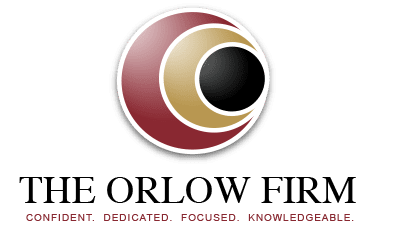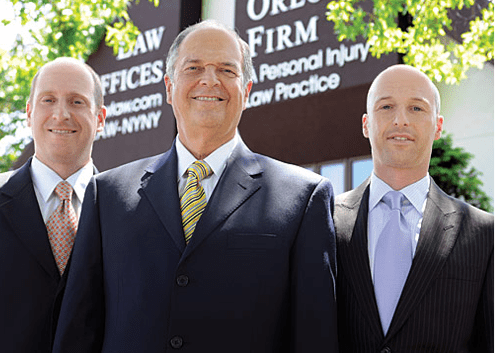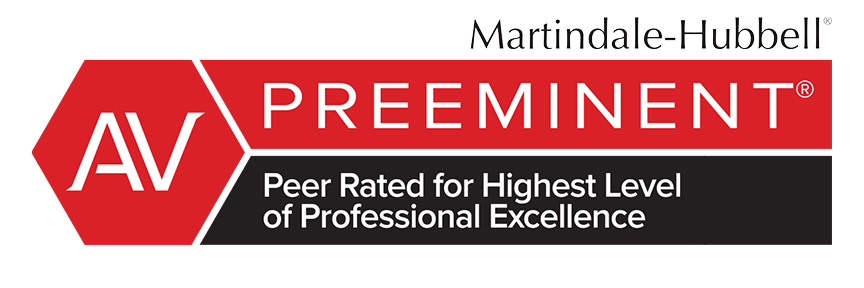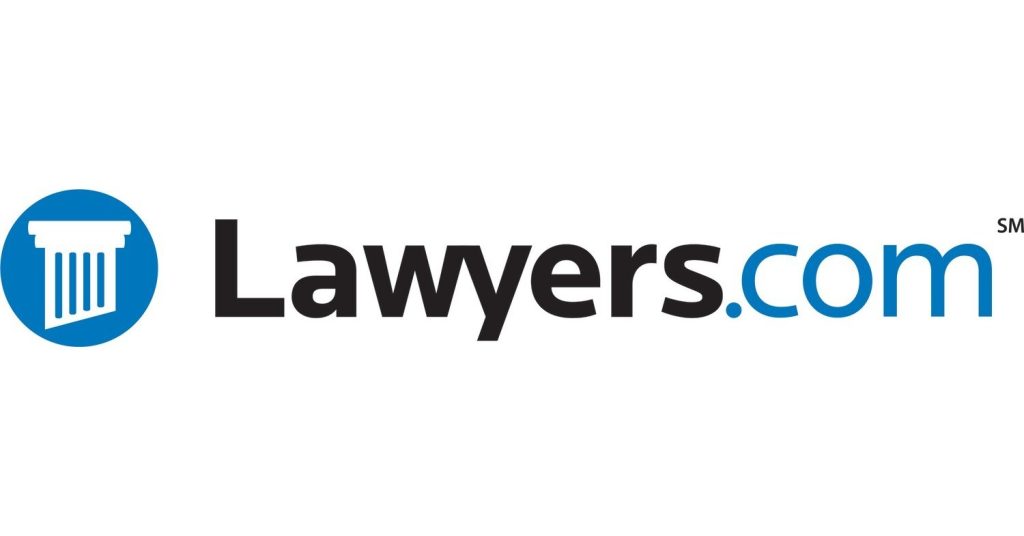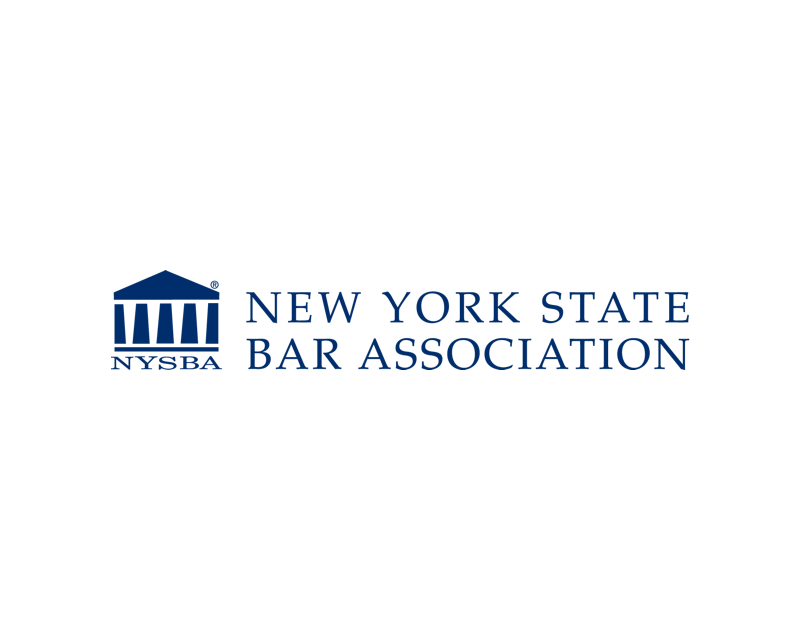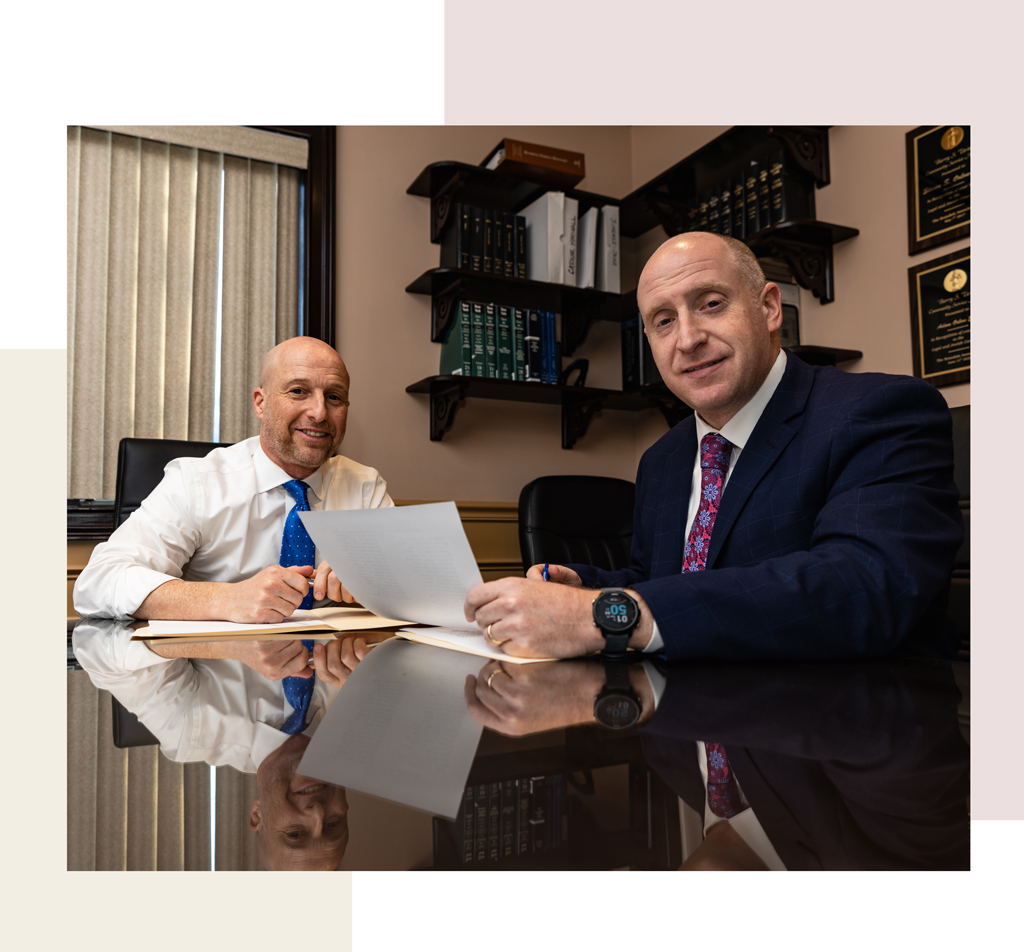The Following People Contributed to This Page
Cindy Cordova is a seasoned legal writer with over seven years of experience crafting clear, informative, and professional content for law firm websites. With a B.A. in English from Trinity Christian College, she combines her strong writing background with a deep understanding of legal topics to help firms connect with their clients through trustworthy and accessible content.
- August 6, 2025
What are Employer Safety Responsibilities on Construction Sites?
Quick Answer: In New York City, employers, property owners, and general contractors are legally responsible for ensuring safe working conditions on construction sites. This includes complying with OSHA regulations, providing appropriate safety equipment, and conducting regular safety training and inspections. These responsibilities are not just best practices—they are obligations under New York Labor Laws designed to protect workers from accidents and injuries.
If you or a loved one has been injured on a construction site due to unsafe conditions, contact our construction injury lawyers at (646) 647-3398 for a consultation.
Attorney Advertising Disclaimer: This content is for informational purposes only and does not constitute legal advice. No attorney-client relationship is formed by reading this content or contacting the firm. Prior results do not guarantee a similar outcome.
The Importance of Safety Protocols in NYC Construction Sites
Construction sites in New York City are dynamic, high-risk environments. Ensuring proper safety protocols is essential—not just to meet legal standards, but to protect the lives and well-being of everyone on and around the site.
1. Protecting Workers’ Lives
Construction workers frequently operate heavy machinery, work at elevated heights, and handle hazardous materials. These tasks come with inherent risks. To reduce the chance of serious injury or death, employers must:
- Enforce the use of personal protective equipment (PPE), such as hard hats, harnesses, and goggles.
- Train workers on hazard recognition and safe work practices.
- Monitor site activity to ensure compliance with safety rules.
These aren’t optional—they’re mandated under both OSHA and New York State law.
2. Reducing Legal and Financial Risks
Under New York Labor Law:
- § 200 requires employers and owners to maintain safe premises.
- § 240, known as the Scaffold Law, imposes strict liability for gravity-related injuries like falls from heights.
- § 241 mandates specific safety measures for excavation, demolition, and construction activities.
Important: Under § 240, a worker may recover damages even without proving negligence if safety equipment was inadequate or absent. Non-compliance can lead to:
- Personal injury lawsuits
- Regulatory fines
- Higher insurance premiums
- Project delays and shutdowns
By implementing safety protocols, employers reduce both injury risks and legal exposure.
3. Enhancing Productivity and Worker Morale
When workers feel safe, they’re more confident and focused. A secure work environment leads to:
- Fewer interruptions from accidents
- Greater efficiency
- Higher morale and job satisfaction
- Lower employee turnover
Safety and productivity go hand in hand.
4. Staying Compliant with Federal and State Regulations
Construction sites must comply with OSHA guidelines and New York-specific regulations. Key areas include:
- Fall protection systems
- Scaffolding integrity
- Electrical hazard controls
- Proper signage and barriers
While OSHA provides a federal safety baseline, New York Labor Laws often impose even stricter standards—especially in worker injury cases.
To stay compliant:
- Conduct regular safety audits
- Offer ongoing safety training
- Keep updated with regulatory changes
Safety on NYC construction sites isn’t just about checking boxes—it’s about protecting lives, meeting legal obligations, and maintaining a productive workforce. Employers, contractors, and property owners must stay proactive and vigilant in meeting their safety responsibilities.
If you’ve been injured on a construction site or believe your employer failed to follow proper safety procedures, The Orlow Firm is here to help. Contact us at (646) 647-3398 for a free consultation.
Key Employer Safety Responsibilities Under New York Law
In New York, employers in the construction industry have specific legal responsibilities to ensure the safety of their workers. These responsibilities are especially critical in a city like New York, where construction is constant and the risk of serious accidents is high. Understanding these duties helps workers know their rights and helps employers remain compliant with applicable federal and state safety regulations.
1. Provide a Safe Working Environment
Employers, contractors, and property owners must maintain safe job sites in accordance with New York Labor Law § 200, which requires them to take reasonable care to provide safe working conditions. This includes:
- Performing routine safety inspections to identify and eliminate hazards like unstable scaffolding, exposed wiring, or unsecured machinery.
- Adjusting safety measures as site conditions change to address new or evolving dangers.
2. Compliance with OSHA Standards
Employers are required to follow Occupational Safety and Health Administration (OSHA) standards, which serve as the federal baseline for workplace safety. These duties include:
- Ensuring access to proper personal protective equipment (PPE)—such as helmets, gloves, safety glasses, and harnesses.
- Verifying that workers are trained in the correct use of this equipment.
3. Conduct Safety Training
Under OSHA regulation 29 CFR § 1926.21 and New York Labor Law § 861-c (Workplace Safety Training Program), employers must:
- Provide workers with training on tool and equipment use, emergency procedures, and accident prevention.
- Offer regular refresher courses to reinforce safe work practices and ensure compliance with evolving standards.
4. Implement Fall Protection
Given the nature of construction work in New York City, fall protection is one of the most critical requirements. According to OSHA regulation 29 CFR § 1926.501, employers must:
- Implement fall protection systems (such as guardrails, safety nets, or harnesses) when workers are exposed to vertical drops of six feet or more.
- Ensure that all fall protection equipment is inspected and maintained regularly.
5. Hazard Communication
Employers must comply with OSHA’s Hazard Communication Standard, which requires:
- Proper labeling of hazardous substances.
- Accessible Safety Data Sheets (SDS) for all chemicals on site.
- Training workers on how to safely handle and store these materials.
7. Reporting and Recordkeeping
Employers are required to maintain accurate and complete records of workplace injuries and illnesses. They must:
- Comply with OSHA’s recordkeeping requirements under 29 CFR Part 1904.
- Report serious injuries or fatalities to OSHA within required timeframes (e.g., 8 hours for fatalities, 24 hours for hospitalizations or amputations).
8. Protect Workers from Extreme Temperatures
Construction work in New York City exposes workers to extreme environmental conditions, including heat waves and cold weather. Under OSHA’s General Duty Clause (29 U.S.C. § 654(a)(1)), employers must:
- Take reasonable steps to prevent heat- and cold-related illnesses, such as providing water, rest breaks, shade during high heat, and warm shelter during extreme cold.
- Train workers and supervisors to recognize symptoms of heat stress, hypothermia, and other temperature-related health risks.
- Monitor weather conditions and adjust work schedules or practices when environmental hazards pose a significant threat to worker safety.
By fulfilling these responsibilities, employers help protect their workforce and reduce the risk of legal and financial consequences. If you believe your employer failed to meet these obligations and it resulted in injury, you may have the right to compensation under New York Labor Laws. Contact The Orlow Firm at (646) 647-3398 for a consultation.
Common Safety Violations on Construction Sites in New York City
Construction sites in New York City are high-activity environments where safety must be a top priority. When safety protocols are ignored, serious or fatal injuries can occur. Understanding the most common safety violations can help both employers and workers take preventive action.
1. Inadequate Fall Protection
Falls remain one of the leading causes of construction site injuries and fatalities. Violations typically include:
- Missing or improperly installed guardrails or safety nets
- Failure to use personal fall arrest systems
- Inadequate inspection and maintenance of fall protection equipment
2. Improper Scaffolding
Scaffold-related accidents often result from:
- Incorrect assembly or use of damaged components
- Lack of required guardrails or toeboards
- Failure to perform routine safety inspections
3. Unsafe Ladders
Common ladder violations include:
- Using defective or damaged ladders
- Failure to secure ladders properly
- Using the wrong type of ladder for a given task
4. Electrical Hazards
Improper electrical safety can result in severe injuries or death. Frequent violations include:
- Exposed or frayed wiring
- Inadequate grounding of electrical equipment
- Failure to follow lockout/tagout procedures when servicing machinery
5. Lack of Personal Protective Equipment (PPE)
Employers must provide and enforce the use of proper PPE. Violations may involve:
- Absence of required items like helmets, gloves, eye protection, or high-visibility clothing
- Failure to enforce consistent PPE usage on site
6. Improper Use of Heavy Machinery
Operating machinery without the proper credentials or protocols can cause major incidents. Common violations include:
- Lack of proper licensing or certification for operators, especially for equipment like cranes or forklifts
- By passing safety devices or guards
- Skipping regular maintenance and safety checks
7. Inadequate Training
Workers must receive comprehensive safety training to prevent accidents. Violations often involve:
- Failure to train employees on equipment operation, site hazards, and emergency protocols
- Not offering refresher courses or training for new safety requirements
- Assigning tasks to workers without proper qualification or certification
8. Failure to Address Environmental Hazards
Construction workers are vulnerable to extreme heat, cold, and other environmental risks. Under OSHA’s General Duty Clause (29 U.S.C. § 654(a)(1)), employers are required to protect workers from recognized environmental hazards when conditions pose a serious risk. Violations can include:
- Not providing shade, hydration, or rest breaks during heat waves
- Failing to offer warm shelter or protective gear during cold exposure
- Lack of training in recognizing symptoms of heat or cold-related illnesses
These common violations highlight the importance of adhering to safety regulations and ensuring that all workers are equipped with the knowledge and tools to perform their jobs safely. If you or a loved one has been injured on a construction site due to these or other safety violations, it is crucial to understand your rights and options. For guidance and support, contact The Orlow Firm at (646) 647-3398 to discuss your situation with our dedicated legal team.
How Employers Can Ensure a Safe Work Environment in NYC
Ensuring a safe work environment on construction sites in New York City is both a legal obligation and an ethical responsibility for employers. Given the city’s constant construction activity and the high-risk nature of the work, adhering to safety standards is critical to preventing workplace accidents and protecting the health and lives of workers.
Below are key strategies employers can adopt to promote a safe and compliant construction site:
- Comprehensive Safety Training: Employers should provide thorough safety training to all employees. This includes instruction on the use of safety equipment, understanding site-specific hazards, and emergency procedures. Regular refreshers and updates on safety protocols are also essential.
- Regular Safety Inspections: Conducting routine safety inspections can help identify potential hazards before they lead to accidents. Employers should have a checklist that covers all aspects of the site, including equipment, scaffolding, electrical systems, and personal protective equipment (PPE).
- Enforce Use of Personal Protective Equipment (PPE): Ensuring that workers wear appropriate PPE, such as helmets, gloves, and harnesses, is vital. Employers should provide this equipment and enforce its use through regular checks and disciplinary measures if necessary.
- Site-Specific Safety Plans: Each construction site has unique challenges and risks. Employers should develop a site-specific safety plan that addresses these factors, including detailed emergency response procedures and evacuation routes.
- Promote a Safety Culture: A strong safety culture encourages workers to prioritize safety and report hazards without fear of retaliation. Employers can foster this by recognizing and rewarding safe practices and maintaining open lines of communication.
- Compliance with Regulations: Employers must stay informed about and comply with regulations set by the Occupational Safety and Health Administration (OSHA) and New York state laws. This includes maintaining proper documentation and promptly addressing any violations.
- Implementing Technology: Utilizing technology such as drones for site surveillance and wearable devices that monitor worker health and safety can help prevent accidents and improve response times in emergencies.
By taking these proactive steps, employers in NYC can significantly reduce the risk of accidents on construction sites. If you have concerns about safety practices at your workplace or if you’ve been injured due to unsafe conditions, The Orlow Firm is here to help. Contact us at (646) 647-3398 for a consultation.
The Role of OSHA in Regulating Construction Site Safety
When discussing employer responsibilities on construction sites, the role of the Occupational Safety and Health Administration (OSHA) is central. OSHA is a federal agency under the U.S. Department of Labor, responsible for ensuring safe and healthful working conditions by setting and enforcing workplace safety standards. In New York City, where construction is ongoing and often high-risk, understanding OSHA’s role helps both employers and workers better understand their rights and duties.
OSHA Standards and Regulations
OSHA sets comprehensive standards aimed at minimizing hazards in the workplace. For construction sites, these standards cover a wide range of safety aspects, including:
- Fall Protection: Employers must provide fall protection systems—such as guardrails, safety nets, or harnesses—to prevent workers from falling from heights, one of the most common hazards on construction sites.
- Scaffolding Safety: OSHA requires scaffolds to be erected, used, and dismantled under the supervision of a qualified person to ensure structural stability and worker safety.
- Hazard Communication: Employers must inform and train workers about hazardous chemicals present on site, ensure all containers are properly labeled, and make Safety Data Sheets (SDS) readily accessible.
- Personal Protective Equipment (PPE): Employers are responsible for assessing job site hazards and providing appropriate PPE, such as hard hats, gloves, protective eyewear, and high-visibility clothing.
- Equipment Operation and Licensing: Certain types of heavy machinery—such as cranes and powered industrial trucks—must only be operated by workers who have received proper training, certification, and evaluation, as required under OSHA regulations (e.g., 29 CFR § 1926.1427). Using unlicensed or untrained operators can result in both safety hazards and compliance violations.
Inspections and Compliance
OSHA conducts construction site inspections to monitor compliance with federal safety regulations. These inspections may be:
- Scheduled, as part of routine oversight; or
- Unannounced, triggered by employee complaints, serious injuries, fatalities, or referrals from other agencies.
In certain cases, OSHA may initiate an investigation involving forensic engineering analysis—especially following major incidents involving structural failures or fatalities. These investigations aim to identify root causes and recommend safety improvements to prevent future harm.
In high-volume construction areas like New York City, where job sites are often dense and complex, consistent compliance is vital to ensuring worker safety and avoiding regulatory action.
Consequences of Non-Compliance
Employers who fail to comply with OSHA standards may face a range of serious consequences, including:
- Monetary fines, which can increase based on the severity or repeat nature of the violation
- Regulatory citations that may be used as evidence in subsequent legal proceedings
- Inclusion in OSHA’s Severe Violator Enforcement Program (SVEP) if violations are found to be willful, repeated, or particularly hazardous
- Mandatory correction of cited hazards, often under tight timelines
In addition to financial and legal exposure, non-compliance can significantly impact worker morale, reputation, and project timelines.
OSHA’s Role in Promoting a Culture of Safety
In addition to enforcement, OSHA plays a proactive role in helping employers improve workplace safety through various educational and consultative programs. These include:
- Free on-site safety consultations, available to employers seeking to voluntarily improve their safety programs
- Guidelines, fact sheets, and training materials tailored to construction industry risks
- Outreach campaigns during seasonal hazards, such as heat waves or cold weather
Employers in New York City can use these resources to reduce risk, train employees more effectively, and stay up to date with evolving safety requirements.
Understanding OSHA’s role in construction site safety is essential for both employers and employees. Compliance is not only a legal responsibility—it’s a key component in reducing workplace injuries and creating a safer work environment. By staying informed and proactive, employers can contribute to safer job sites for everyone involved.
Legal Implications of Failing to Meet Safety Responsibilities
When employers fail to uphold their safety responsibilities on construction sites in New York City, the legal consequences can be substantial. Both employers and workers should understand how these failures may trigger liability under civil, regulatory, and even criminal frameworks.
-
Civil Liability
Employers who neglect safety protocols may face civil liability in certain situations. While workers’ compensation typically bars lawsuits against an employer, New York Labor Law Sections 200, 240, and 241 may allow injured workers to pursue claims outside of the workers’ comp system under specific circumstances. These statutes provide enhanced protections, especially in cases involving falls from heights, unsafe equipment, or violations of specific safety regulations. If liability is established, an employer (or property owner/contractor) may be responsible for damages such as medical expenses, lost income, and pain and suffering.
-
Workers’ Compensation Claims
All employers in New York are required to carry workers’ compensation insurance. This no-fault system provides wage replacement and medical benefits to employees injured on the job. However, if safety violations or repeated incidents raise concerns, employers may face higher premiums, state scrutiny, or additional claims exposure—particularly if third-party liability is involved.
-
Regulatory Penalties
The Occupational Safety and Health Administration (OSHA) is the primary federal agency responsible for enforcing workplace safety. Employers who fail to comply with OSHA standards may be subject to:
- Fines and citations, especially if violations are categorized as serious, repeat, or willful
- Inclusion in the Severe Violator Enforcement Program (SVEP)
- Mandated abatement of hazards within specified timeframes
These penalties are separate from any civil claims and can escalate with repeated non-compliance.
-
Criminal Charges
In rare but serious cases, criminal prosecution may occur—particularly when violations involve gross negligence or willful disregard for safety resulting in death or serious injury. These cases may be pursued under applicable sections of New York Penal Law and typically involve prolonged patterns of disregard or falsification of safety records.
-
Reputational Damage
Apart from legal and financial consequences, failing to meet safety responsibilities can result in lasting reputational harm. This may affect the ability to attract skilled labor, maintain contracts, and foster trust among workers and regulatory agencies.
For workers injured due to unsafe job site conditions, it is important to understand your legal rights under both New York Labor Law and federal safety regulations. You may be entitled to various forms of compensation depending on the circumstances of your injury and the parties involved.
If you’ve been injured on a construction site and believe safety protocols were not followed, contact The Orlow Firm at (646) 647-3398 to discuss your situation with a member of our legal team.
Attorney Advertising Disclaimer: This content is for informational purposes only and does not constitute legal advice. No attorney-client relationship is formed by reading this content or contacting the firm. Prior results do not guarantee a similar outcome.
Rights of Workers Under New York Construction Safety Laws
Construction workers in New York City are entitled to a safe working environment, and there are specific federal and state laws in place to protect their rights. These legal protections aim to reduce the risk of injury and ensure that workers are informed, equipped, and empowered to advocate for their own safety.
- Right to a Safe Work Environment: Under New York Labor Law § 200, workers have the right to a job site that is maintained in a reasonably safe condition. This includes proper implementation of safety procedures, access to protective equipment, and ensuring that tools and machinery are in safe, working order.
- Right to Training and Information: Workers must receive adequate safety training and information about known hazards. Under both OSHA regulations (29 CFR § 1926.21) and New York law, employers are required to provide instruction on hazard recognition, safe equipment use, and emergency procedures. Training helps workers identify risks and protect themselves on the job.
- Right to Report Unsafe Conditions: Workers in New York have the right to report unsafe conditions to supervisors, union representatives, or regulatory authorities without fear of retaliation. Federal law under OSHA’s anti-retaliation provisions and corresponding state protections prohibit employers from punishing workers who raise safety concerns.
- Right to Compensation for Injuries: If a worker is injured on the job, they typically have access to workers’ compensation benefits, which may include coverage for medical expenses and partial wage replacement. While workers’ comp is generally the exclusive remedy against an employer, injured workers may also be able to bring a third-party lawsuit—for example, against a negligent subcontractor, equipment manufacturer, or property owner—depending on the circumstances. These types of claims may allow for additional recovery beyond workers’ comp, such as damages for pain and suffering.
- Right to Refuse Unsafe Work: Under OSHA guidelines, workers may refuse to perform a task if they reasonably believe it poses an imminent danger of serious injury or death, and if there is no time to get it corrected through normal procedures. This right is narrowly defined and should be exercised only when specific conditions are met, but it exists to protect workers from immediate harm.
Understanding your rights under both state and federal safety laws is essential for protecting yourself on the job. If you or someone you know has been injured due to unsafe conditions on a construction site, you may be eligible to pursue compensation through workers’ compensation or other legal claims.
To learn more about your legal options, contact The Orlow Firm at (646) 647-3398 to speak with a member of our legal team.
Steps to Take if Injured Due to Employer Negligence
If you find yourself injured on a construction site due to employer negligence, taking swift and informed action is crucial. Here are the steps you should follow to protect your rights and ensure you receive the compensation you may be entitled to:
1. Seek Immediate Medical Attention
Your health and safety come first. Even if the injury appears minor, it’s important to see a qualified medical professional. Prompt medical care helps ensure a proper diagnosis and creates a record of the injury, which may be essential for any claim you file.
2. Report the Incident
Under the New York Workers’ Compensation Law, you must notify your employer within 30 days of the incident. Report the injury to a supervisor or designated representative as soon as possible, ideally in writing. Delays in reporting can limit or jeopardize your eligibility for benefits.
3. Document the Scene and Circumstances
If you’re physically able, gather evidence from the scene. This includes:
- Photographs of the hazard or equipment involved
- Photos of your injuries
- Names and contact info for any witnesses
- Notes about what happened, when, and how
This documentation can be helpful if your case involves third-party liability or an OSHA violation.
4. Keep Detailed Records
Organize all documents related to your injury and recovery, including:
- Medical records and bills
- Letters or emails from your employer or insurance company
- Receipts for out-of-pocket expenses
- Any forms filed with the Workers’ Compensation Board
These records may be critical for verifying your losses and ensuring accurate benefit calculation.
5. Understand Your Rights
New York law gives injured construction workers certain rights and protections. Most on-the-job injuries are handled through workers’ compensation, but you may also have other rights under New York Labor Law §§ 200, 240, and 241, depending on the circumstances. Learning what you’re entitled to is key to making informed decisions.
6. Consult a Qualified Attorney
Claims involving unsafe job site conditions or third-party liability can be legally complex. Speaking with a knowledgeable personal injury or workers’ compensation attorney can help you:
- Navigate the claims process
- Avoid common mistakes
- Understand your legal options
- Communicate effectively with insurers and employers
An attorney can evaluate whether your case may involve claims beyond workers’ compensation, such as against a general contractor, subcontractor, or equipment manufacturer.
7. Consider Potential Third-Party Claims
Injuries on construction sites often involve multiple parties, including property owners, subcontractors, and equipment suppliers. If another party’s negligence contributed to your injury, you may be able to pursue a separate personal injury lawsuit—in addition to your workers’ comp benefits.
When to Act
New York law has strict deadlines for filing both workers’ compensation and third-party claims. Early action improves your chances of preserving evidence and protecting your rights.
If you’ve been injured on a construction site and suspect unsafe conditions or negligence were involved, you may benefit from legal guidance. To discuss your situation, contact The Orlow Firm at (646) 647-3398 to speak with a member of our legal team.
Attorney Advertising Disclaimer: This content is for informational purposes only and does not constitute legal advice. No attorney-client relationship is formed by reading this content or contacting the firm. Prior results do not guarantee a similar outcome.
How The Orlow Firm Assists Injured Construction Workers
In the fast-paced environment of New York City, construction sites are everywhere—and unfortunately, so are construction-related injuries. At The Orlow Firm, we understand how complex construction accident cases can be and are committed to helping injured workers understand their legal rights and explore their options.
Here’s how we assist construction injury clients:
- Thorough Case Evaluation: Every case starts with a detailed review of the circumstances surrounding your accident. We examine the site conditions, identify all potentially responsible parties, and assess the nature and severity of your injuries. This evaluation helps us tailor a legal strategy specific to your situation.
- Investigating Employer Safety Responsibilities: Employers are required to follow federal and state safety laws, including compliance with OSHA standards and New York Labor Law §§ 200, 240, and 241. We examine whether any failures to follow these laws contributed to the incident. While workers’ compensation is typically the exclusive remedy against employers, safety violations may support other claims under New York labor laws.
- Guidance Through the Workers’ Compensation Process: New York workers are generally entitled to workers’ compensation benefits, regardless of who caused the accident. These benefits can include medical care, lost wages, and other support. We help you file your claim, ensure proper documentation, and work to minimize delays—so you can focus on recovery.
- Pursuing Third-Party Claims: Not all construction accidents are solely the employer’s responsibility. If a subcontractor, property owner, or equipment manufacturer contributed to the unsafe conditions, you may be able to pursue a third-party personal injury lawsuit in addition to workers’ compensation. We investigate all avenues to identify potential third-party claims.
- Legal Advocacy Every Step of the Way: Whether we’re negotiating with insurance companies or representing you in litigation, our attorneys work to safeguard your legal rights. We handle the legal complexities so you can focus on healing.
- Compassionate, Client-Focused Support: We understand that recovering from a construction injury is physically and emotionally challenging. Our team keeps you informed, answers your questions, and provides consistent support throughout the process.
If you or a loved one has been injured on a construction site in New York City, it’s important to understand your rights and legal options. Contact The Orlow Firm at (646) 647-3398 to speak with a member of our legal team.
Attorney Advertising Disclaimer: This content is for informational purposes only and does not constitute legal advice. No attorney-client relationship is formed by reading this content or contacting the firm. Prior results do not guarantee a similar outcome.
Frequently Asked Questions About Construction Site Safety in NYC
When it comes to construction site safety in New York City, understanding employer responsibilities is crucial for both employers and workers. Below are some frequently asked questions about construction site safety to help clarify common concerns and provide guidance on how to ensure a safe working environment.
- What are the primary safety responsibilities of employers on construction sites in NYC? Employers in NYC are required to provide a safe working environment in compliance with federal and state regulations. This includes conducting regular safety inspections, ensuring all workers have proper safety training, and providing necessary personal protective equipment (PPE). Employers must also ensure that construction sites adhere to the Occupational Safety and Health Administration (OSHA) standards and local building codes.
- How often should safety inspections be conducted on construction sites? Safety inspections should be conducted regularly, with the frequency depending on the size and nature of the construction project. Routine inspections can be daily, weekly, or at critical phases of construction. It is essential that any hazards identified during inspections are addressed immediately to prevent accidents.
- What is OSHA’s role in construction site safety? OSHA, or the Occupational Safety and Health Administration, is a federal agency responsible for enforcing safety and health legislation. OSHA sets and enforces safety standards and provides training, outreach, education, and assistance. Employers must comply with OSHA standards to ensure the safety and health of their workers.
- What are common safety violations on NYC construction sites? Common violations include inadequate fall protection, improper scaffolding, lack of PPE, insufficient training, and failure to communicate hazards. These violations can result in severe penalties and increase the risk of accidents and injuries on-site.
- What rights do workers have under New York construction safety laws? Workers have the right to a safe workplace, access to safety training, and the ability to report unsafe conditions without fear of retaliation. They are also entitled to receive information about potential hazards and the safety measures in place to mitigate those risks.
- What should a worker do if they are injured due to unsafe working conditions? If injured, a worker should seek immediate medical attention and report the injury to their employer as soon as possible. Documenting the incident and any unsafe conditions is crucial. Workers may also be entitled to workers’ compensation and should consider consulting with a personal injury attorney to explore additional legal options.
If you have further questions or need assistance regarding construction site safety or if you’ve been injured on a construction site, The Orlow Firm is here to help. Contact us at (646) 647-3398 to discuss your case with our dedicated legal team.
Contacting The Orlow Firm for Construction Site Injury Cases
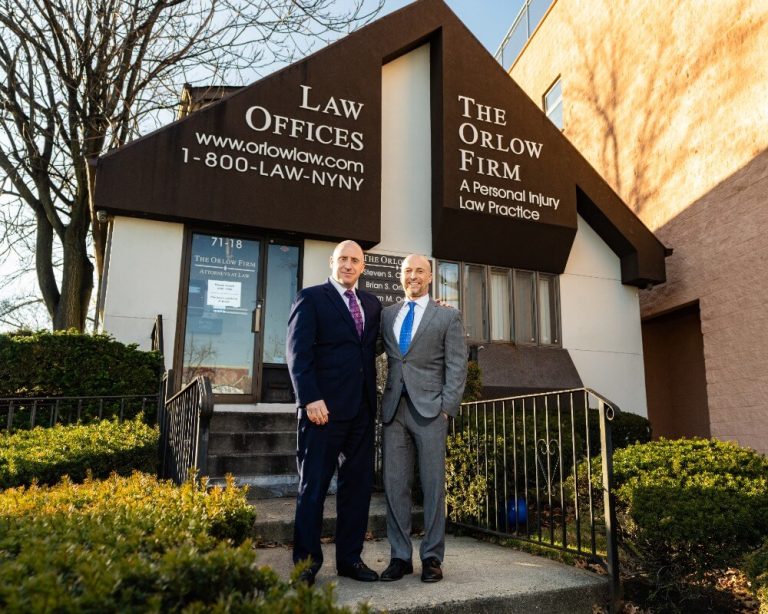
When dealing with a construction site injury in New York City, it’s crucial to seek legal guidance to understand your rights and options. At The Orlow Firm, we are dedicated to helping injured construction workers navigate the complexities of personal injury law and employer safety responsibilities on construction sites.
If you’ve been injured due to unsafe conditions or employer negligence on a construction site, contacting The Orlow Firm can be an important step in securing the compensation you deserve. Here’s how we can assist you:
- Free Consultation: We offer a free initial consultation to discuss the details of your case. This meeting allows us to understand the circumstances of your injury and advise on the best course of action, without any financial obligation on your part.
- Comprehensive Case Evaluation: Our team will evaluate the specifics of your case, including the nature of the accident, the extent of your injuries, and the safety measures in place at the time of the incident. This helps us determine if there were any violations of employer safety responsibilities.
- Expert Guidance: Navigating the legal landscape of construction accidents can be complex. We provide clear, straightforward advice on your legal rights and potential claims, ensuring you are informed every step of the way.
- Dedicated Representation: If you choose to pursue legal action, our attorneys will represent your interests diligently, whether negotiating a settlement or litigating in court. We focus on achieving the best possible outcome for your situation.
- Focus on Your Recovery: Handling a legal claim can be stressful, especially while recovering from an injury. We manage all aspects of your case, allowing you to concentrate on your physical and emotional recovery.
If you believe your injury was a result of an employer’s failure to adhere to safety responsibilities on a construction site, it’s essential to act promptly. Evidence can be lost, and there are time limits for filing claims. Contact The Orlow Firm at (646) 647-3398 to schedule your free consultation today and take the first step towards protecting your rights and securing the compensation you deserve.
Attorney Advertising Disclaimer: This content is for informational purposes only and does not constitute legal advice. No attorney-client relationship is formed by reading this content or contacting the firm. Prior results do not guarantee a similar outcome.
The Following People Contributed to This Page
Cindy Cordova is a seasoned legal writer with over seven years of experience crafting clear, informative, and professional content for law firm websites. With a B.A. in English from Trinity Christian College, she combines her strong writing background with a deep understanding of legal topics to help firms connect with their clients through trustworthy and accessible content.
